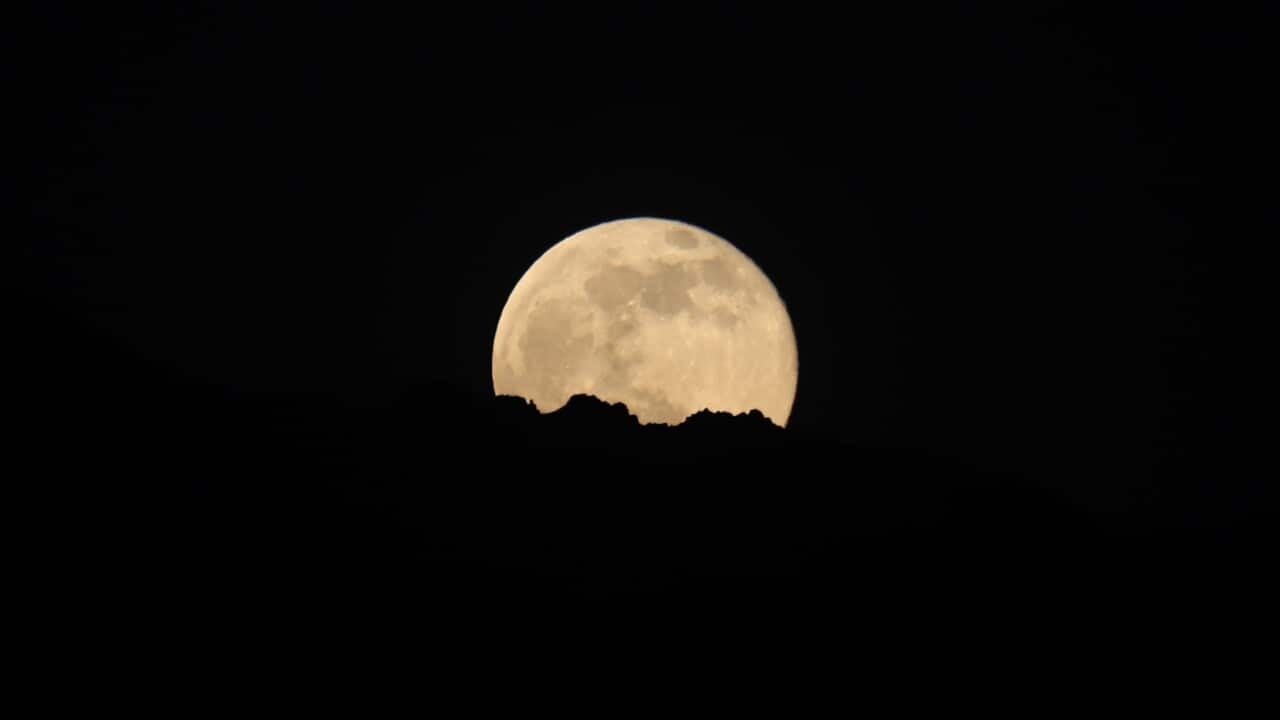The November 'beaver' moon will bring a large and particularly bright moon to Australian skies on Wednesday evening.
The 'supermoon' rising after sunset on Wednesday is the second in a series of three that will happen this year.
A supermoon is a type of full moon that occurs when the moon is directly opposite the sun, with the Earth positioned between them.
Supermoons are the name for a full moon that coincides with its closest approach to Earth, as the moon does not orbit in a perfect circle and instead orbits around Earth in an oval shape.
The close approach to Earth makes the moon appear brighter and approximately 10 per cent larger than a typical full moon.
Supermoons tend to occur in sets every year due to the Earth's position, and another is expected on 4 December.
What's special about this week's supermoon?
This week's supermoon will be particularly large and bright compared to other supermoons.
That's because the moon is making its closest approach to Earth in its orbit.
The moon's closest point to Earth is known as perigee, and during its approximately 27.3-day orbit around Earth, the moon reaches both its perigee, about 363,000km from Earth, and its farthest point — or apogee — about 405,500km from Earth.

While a supermoon may be cause for excitement among many, astronomers say they are not ideal for observing other celestial objects. Source: AAP / .
"This supermoon corresponds to what is pretty close to the moon's perigee, the closest approach. So this is the biggest the moon will look in the sky because it will be the closest in its orbit," he said.
"It will be about 30,000km closer than it would be on average. So it's going to be about 356,000km away from us — which is very, very far, but it's about 8 per cent closer than on average."
Batten said this supermoon will also be particularly bright and is predicted to be around 16 per cent brighter than average.
But what is a beaver moon?
This week's supermoon is also known as the 'beaver' moon — a nickname for the November full moon that has its origins in various traditions and folklore in Native American and European cultures, according to NASA.
November is when beavers ready themselves for winter — and when, historically, trappers once sought their thick pelts for warm clothing across the Northern Hemisphere.
The year's first supermoon, known as a 'harvest moon' due to farming calendars in the Northern Hemisphere, occurred in October.
What is the best time to see the beaver moon?
Batten said while the moon will technically only hit its closest approach to Earth after midnight for Australians on the east coast, the best time to view it will be just after sunset.
"If you look at it at sunset, that's probably when it's going to look its best because it's going to be close to the horizon and due to a illusion of our eyes, things look bigger when they're on the horizon because you see them relative to cities or skyscrapers or things on the horizon, our eyes have a reference point," he said.
"Things naturally look bigger on the horizon than when they're vertically in the sky."
However, Batten said that while people may be excited about the supermoons, he stressed full moons are the "worst time of the night for astronomers" because they block out the stars and other objects in the night sky.
"Full moons actually ruin some of our time that we get to observe so we actually don't like the full moon that much. But we do like people talking about the moon."
Share



